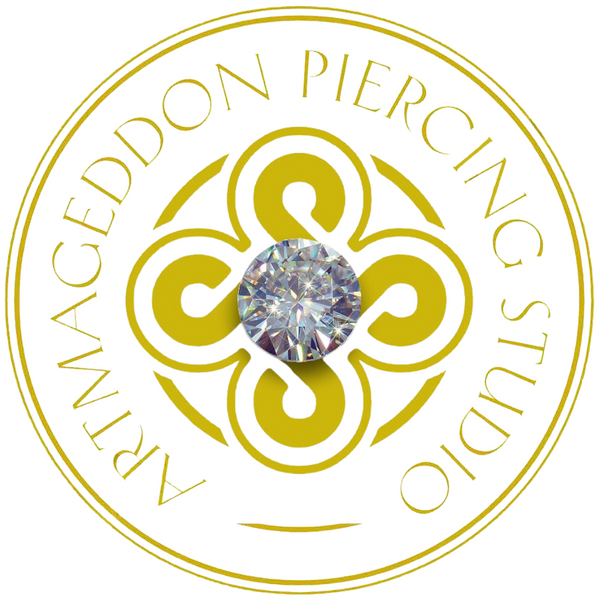Piercing Aftercare Guide
Because your jewellery deserves a healthy, happy home.
We always encourage your professional piercer giving you all the information you need, but in case they didn’t (or if the excitement after your piercing was a whirlwind), here’s everything you need to know. And even if you got all the info, it’s always good to refresh and remind yourself why these steps matter.
If your piercer didn’t walk you through these essential steps, or maybe suggested something that didn't sound quite right, there is nothing wrong with looking for extra help, that's why we're here. You deserve top-tier care.
Why Aftercare Matters
Piercings are essentially small wounds, and good aftercare means:
Faster, cleaner healing with fewer complications
Reduced risk of bumps, infections, and scarring
Jewellery that stays secure and shiny for longer
You’ve invested in quality jewellery - now let’s give your body the support it needs to heal properly.
1. Clean Twice Daily with Packaged Sterile Saline
Use a product like NeilMed Piercing Aftercare or Piercemed Piercing Aftercare, (our faves!) it should contain only 0.9% sodium chloride. UKAPP recommends not making your own saltwater solutions, as the ratios will never be accurate, and definitely not sterile.
Spray directly on the piercing or soak with sterile gauze for 2–3 minutes.
Do not twist or turn the jewellery - this can irritate and slow healing, and disturb the healing tissue inside.
2. Hands Off - Unless Cleaning
Wash your hands thoroughly before touching the piercing.
Avoid touching, twisting, or fiddling - it increases the risk of infection.
3. Let It Breathe - Keep It Clean
Avoid covering with tight or occlusive dressings.
Rinse off any soap residue after showering.
Sleep on the other side or use a travel pillow with a hole to protect the piercing.
4. Avoid Harsh Products
Do not use alcohol, hydrogen peroxide, tea tree oil, antibacterial soaps, or iodine — these can damage healing tissue.
Avoid ointments - they trap moisture and can delay healing.
Even if your piercing looks healed on the surface, the deeper tissue may still be recovering.
5. Downsizing Matters
If you have a longer bar or post (to allow for swelling), your piercer should have discussed a check-up and downsizing. Downsizing helps:
Prevent irritation, bumps, and pressure on the piercing site
Reduce the risk of the jewellery catching or shifting angles
If no follow-up was suggested, it may be time to find another piercer who prioritises your healing, not just the initial appointment. We recommend having your first check up at around the 6 week mark to check that healing is going well, and possibly have that downsize.
6. Know When to Ask for Help
Contact your piercer if you experience:
Increasing redness, swelling, heat, or pain after the first few days
Sudden bleeding or unusual discharge
Sharp or shooting pain, or jewellery embedding into the skin
7. Bonus: General Wellness Affects Healing
Stay hydrated and nourished - your body needs fuel to heal.
Avoid swimming (especially in lakes, pools, or hot tubs) during the early healing period.
Avoid applying makeup, skincare, or sprays near the piercing while healing.
Final Thoughts
Your jewellery is high quality - your aftercare should match. A good piercer educates, supports, and follows through. If yours didn’t, that’s okay - but it’s always worth finding a studio that offers expert-level aftercare.
At Artmageddon, we believe in delivering more than just stunning jewellery. We’re committed to safe piercing, accurate advice, and long-term support that helps your piercing shine.
